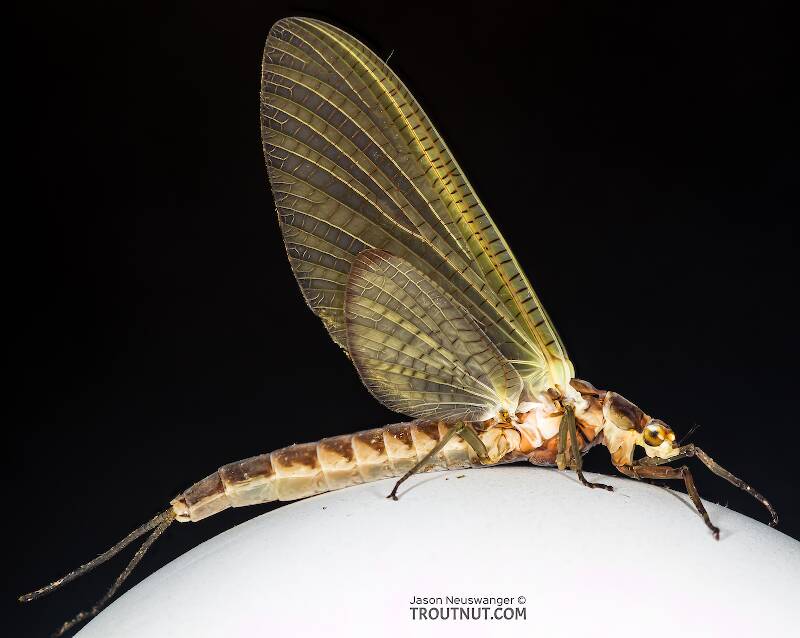
Hex Mayflies
Hexagenia limbata
The famous nocturnal Hex hatch of the Midwest (and a few other lucky locations) stirs to the surface mythically large brown trout that only touch streamers for the rest of the year.
Featured on the forum

This specimen appears to be of the same species as this one collected in the same spot two months earlier. The identification of both is tentative. This one suffered some physical damage before being photographed, too, so the colors aren't totally natural. I was mostly photographing it to test out some new camera setting idea, which worked really well for a couple of closeups.

Troutnut is a project started in 2003 by salmonid ecologist Jason "Troutnut" Neuswanger to help anglers and
fly tyers unabashedly embrace the entomological side of the sport. Learn more about Troutnut or
support the project for an enhanced experience here.
Fly Angler's Glossary of Aquatic Entomology
Fly Angler's Glossary of Aquatic Entomology
I use a lot of fly fishing, photography, and especially entomology jargon on this site. The site incorporates these definitions wherever they're used, but and this page lists together every single form of every term used on this site.
You can also click a link from one of the in-line definitions across the site to come to its full definition page, seeing sub-definitions used within it highlighted and illustrated.

